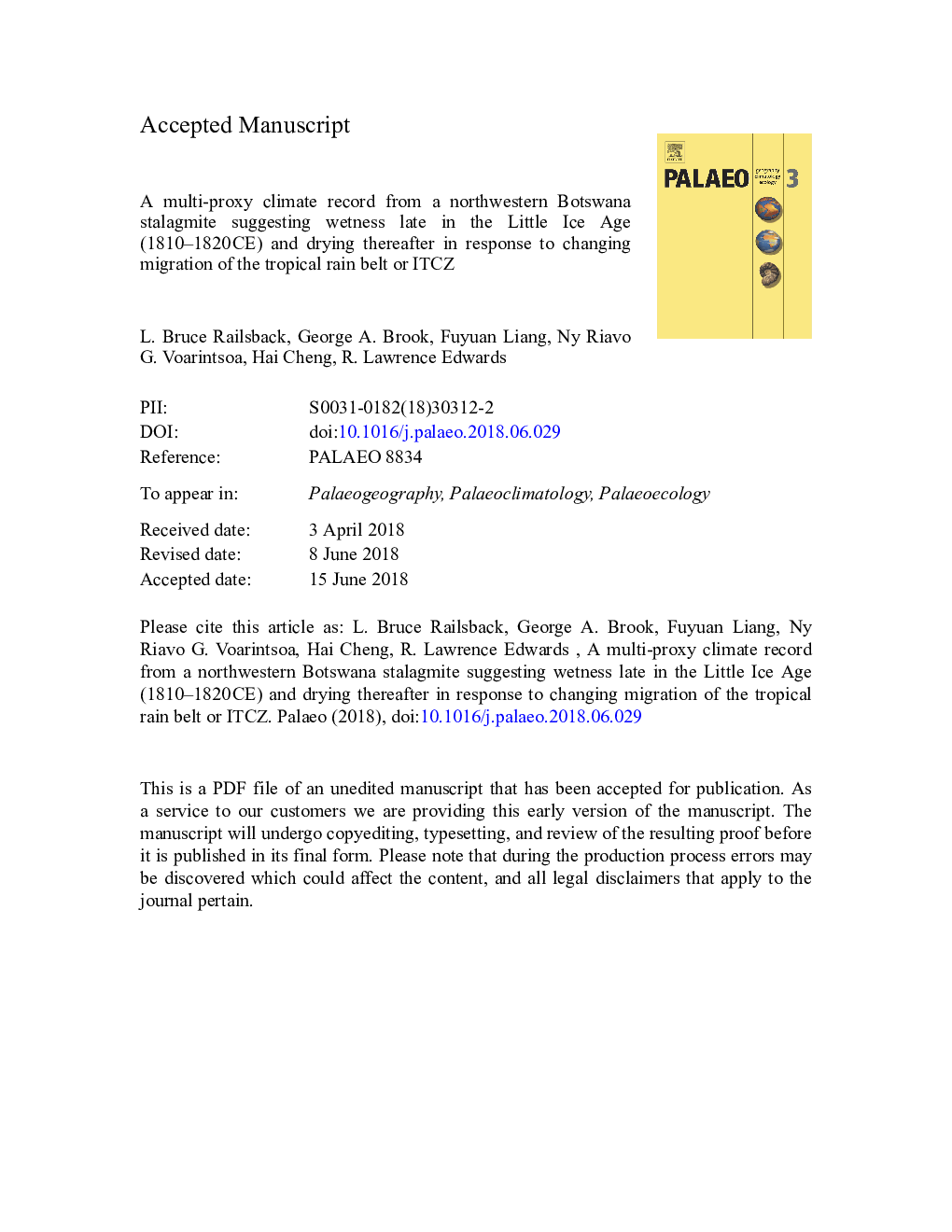| کد مقاله | کد نشریه | سال انتشار | مقاله انگلیسی | نسخه تمام متن |
|---|---|---|---|---|
| 8868102 | 1622086 | 2018 | 65 صفحه PDF | دانلود رایگان |
عنوان انگلیسی مقاله ISI
A multi-proxy climate record from a northwestern Botswana stalagmite suggesting wetness late in the Little Ice Age (1810-1820â¯CE) and drying thereafter in response to changing migration of the tropical rain belt or ITCZ
دانلود مقاله + سفارش ترجمه
دانلود مقاله ISI انگلیسی
رایگان برای ایرانیان
کلمات کلیدی
موضوعات مرتبط
مهندسی و علوم پایه
علوم زمین و سیارات
فرآیندهای سطح زمین
پیش نمایش صفحه اول مقاله

چکیده انگلیسی
Bone Cave lies in the summer rainfall zone, at the southern margin of the tropical rain belt associated with the Inter-Tropical Convergence Zone (ITCZ). Previously published data from other records combine with the Bone Cave record to support wetter conditions in the 1700s and until about 1830, and drier conditions thereafter. The period of exceptional wetness in ~1810-1820 recorded in BC97-14 coincides with a decade of exceptional cold in the Northern Hemisphere, and its acme may be coincident with the Tambora eruption and its resultant “year without a summer” in Europe and North America. These results are thus compatible with movement of the austral-summer ITCZ southward (rather than an increase in rain its customary position) when the Northern Hemisphere cooled relative to the Southern Hemisphere. Conversely, they suggest that the ITCZ has not come as far south as frequently during Earth's warming in the past century.
ناشر
Database: Elsevier - ScienceDirect (ساینس دایرکت)
Journal: Palaeogeography, Palaeoclimatology, Palaeoecology - Volume 506, 1 October 2018, Pages 139-153
Journal: Palaeogeography, Palaeoclimatology, Palaeoecology - Volume 506, 1 October 2018, Pages 139-153
نویسندگان
L. Bruce Railsback, George A. Brook, Fuyuan Liang, Ny Riavo G. Voarintsoa, Hai Cheng, R. Lawrence Edwards,